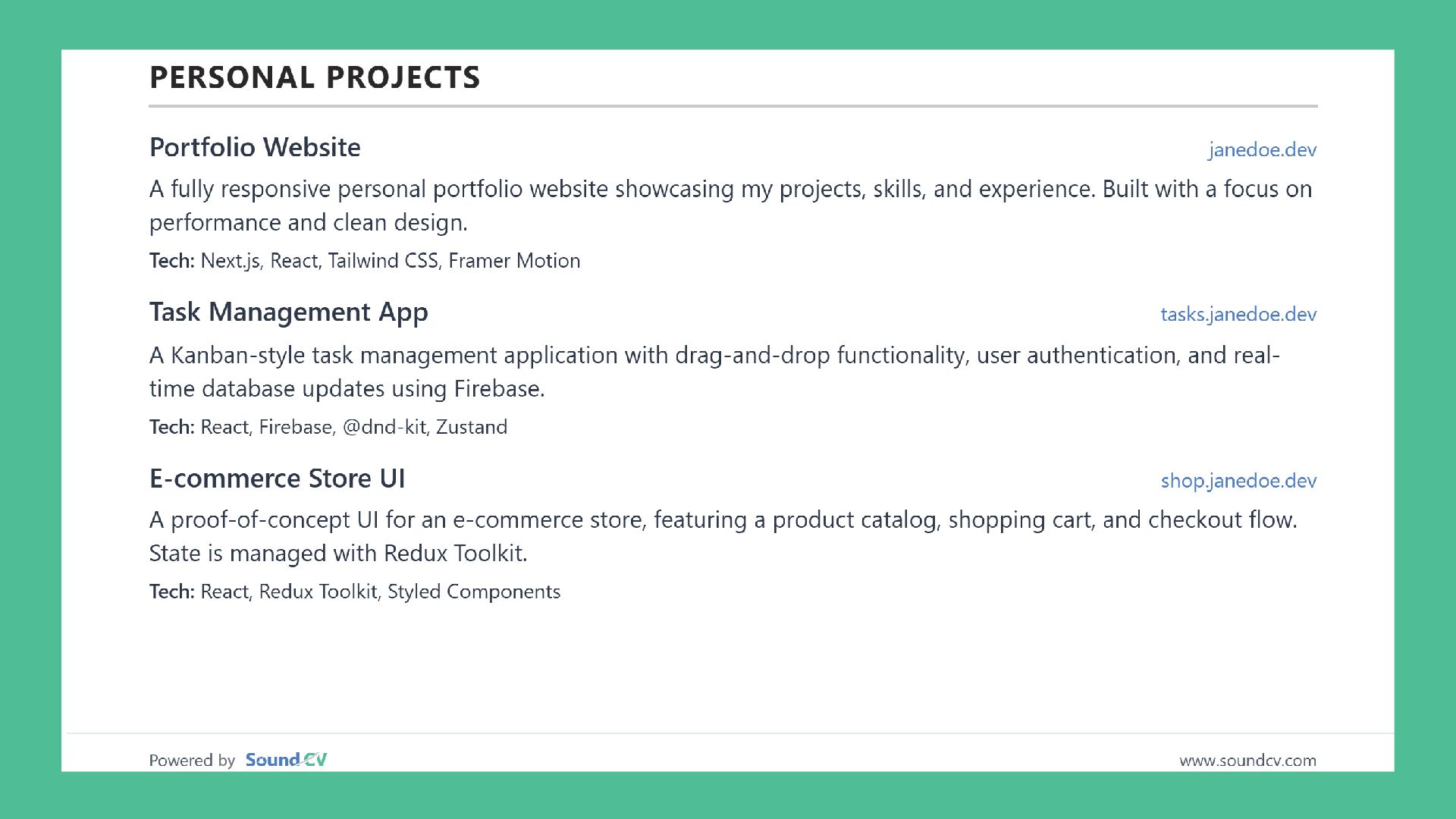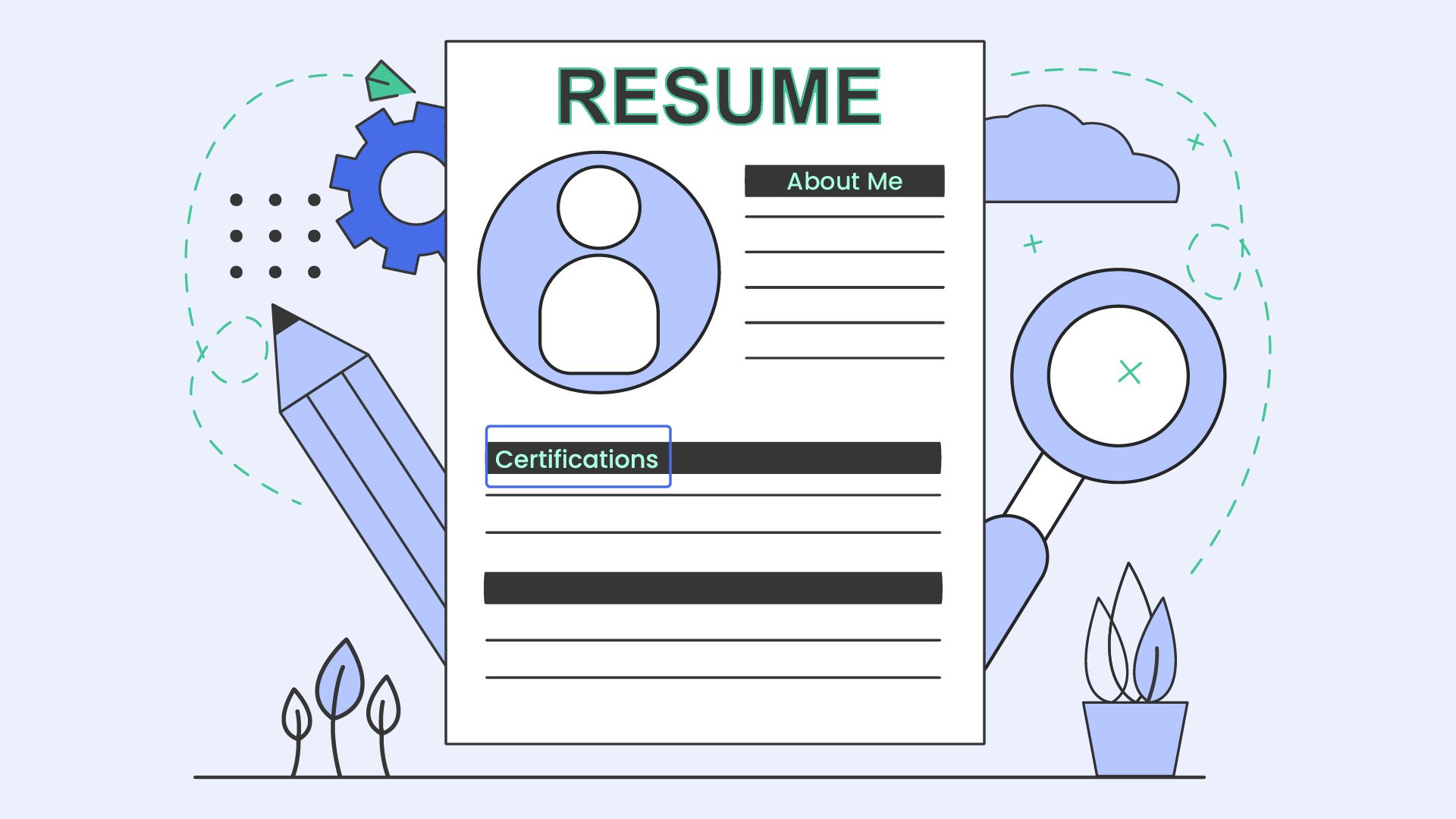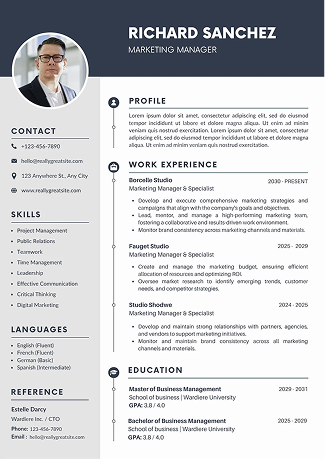Overview
Including the area of interest in resume highlights your professional passions, career focus, and motivation. It helps you stand out, show personality, and demonstrate long-term goals. Freshers benefit by adding depth, while professionals showcase expertise. Use relevant, specific interests tailored to the role. With Sound CV, craft a resume that reflects both your skills and career aspirations.
When creating a resume, most job seekers focus on skills, experience, and education. One section that often gets overlooked is the area of interest in resume. This section highlights your professional passions, career focus, and the fields or topics that drive your growth. Done well, it gives employers insight into your personality, motivation, and potential fit within their organization.
In this guide, we’ll explain how to write the area of interest in resume, provide area of interest examples, share tips for both freshers and professionals, and help you make this section meaningful.
Why Include Area of Interest in Resume?
Including the area of interest in resume can help you:
Show Personality: Reflects your enthusiasm and professional values.
Stand Out: Differentiates you from candidates who only list skills and experience.
Demonstrate Focus: Highlights your long-term career goals.
Assess Cultural Fit: Shows hiring managers if your interests align with the company’s mission.
Also Read:30+ Best Resume Fonts to Use in 2026
Where to Place Area of Interest in Resume
Placement of the area of interest section depends on your career stage and the role you are applying for. Proper placement ensures it adds value without cluttering your resume.
Freshers:
For the area of interest in resume for freshers, it’s best to place this section toward the end of the resume, after your education and skills.
Since freshers often have limited professional experience, this section provides additional context about your curiosity, learning mindset, and the fields you are passionate about.
You can list 3–5 interests in bullet points or a short line. This placement keeps the focus on your qualifications first while still showing recruiters your enthusiasm and potential.
Also Read:ATS Friendly Resume for Freshers
Experienced Candidates:
For professionals with work experience, the placement can be more strategic. If your areas of interest align closely with the job or demonstrate specialized expertise, position them right after your skills or summary to catch the recruiter’s attention early.
Otherwise, include them near the bottom of your resume, following your work experience and achievements. This placement acts as a subtle reinforcement of your career focus and ongoing interests, showing that you are committed to growth in your field.
Additional Tips for Placement:
Role-Specific Adjustment: For roles requiring creativity or specialized knowledge, consider placing the section higher to highlight relevant passions.
Avoid Cluttering: Keep this section concise to prevent overwhelming the recruiter with too much information.
Visual Separation: Use clear headings or spacing to make the area of interest stand out without distracting from key qualifications.
How to Write Area of Interest in Resume
Follow these tips to make your area of interest for resume effective:
Keep It Relevant: Align your interests with the role or industry. For marketing roles, interests like “digital advertising” or “brand development” are better than “painting.”
Be Specific: Instead of “technology,” say “artificial intelligence and cloud computing.” Specifics make your resume more engaging.
Use Professional Language: Avoid casual phrases like “hanging out with friends.” Focus on career-related interests.
Keep It Short: List 3–5 interests in bullet points or a single line.
Mix Professional & Personal Interests (if relevant): Include interests that highlight transferable skills such as leadership or teamwork.
Also Read:How to write CV for Internship
Area of Interest in Resume for Freshers
Freshers may struggle to showcase experience, so including area of interest in resume for freshers provides context and shows curiosity.
Examples:
Digital marketing and brand promotion
Data analytics and problem-solving
Web development and UI/UX design
Finance and investment strategies
Human resource management and employee engagement
Sample Section for Freshers:
Digital Marketing Campaigns
Search Engine Optimization (SEO)
Social Media Engagement Strategies
Even without extensive work history, this section demonstrates focus and enthusiasm in your chosen field.
100+ Area of Interest Examples by Industry
100+ area of interest examples by industry to make your resume stand out and showcase your professional passions.
IT & Technology Professionals
Artificial Intelligence & Machine Learning
Cybersecurity & Cloud Computing
Mobile App Development
Data Science & Big Data Analytics
DevOps & Continuous Integration
Blockchain Technology
Software Architecture & System Design
Internet of Things (IoT) Development
Front-end Development (React, Angular)
Back-end Development (Node.js, Python)
Full Stack Web Development
Software Testing & QA
Embedded Systems
Game Development
Network Administration & Security
Finance & Accounting Professionals
Investment Banking & Portfolio Management
Risk Analysis & Compliance
Taxation & Auditing
Corporate Financial Planning
Financial Modeling & Forecasting
Mergers & Acquisitions
Wealth Management & Advisory
FinTech Innovations
Budgeting & Cost Analysis
Credit Analysis & Lending
Marketing Professionals
Digital Advertising & SEO
Consumer Behavior Research
Brand Strategy & Storytelling
Social Media Analytics
Content Marketing & Copywriting
Influencer Marketing
Email Campaigns & Automation
Market Research & Trend Analysis
Product Marketing & Launch Strategies
Event Marketing & Management
Human Resources Professionals
Employee Training & Development
Talent Acquisition & Retention
Workplace Diversity & Inclusion
Organizational Behavior
Employee Engagement Strategies
HR Technology & Analytics
Compensation & Benefits Management
Leadership Development Programs
Performance Appraisal Systems
Workforce Planning & Optimization
Engineering Professionals
Robotics & Automation
Sustainable Energy Systems
Product Design & Development
Structural Analysis & CAD Modeling
Civil Infrastructure Planning
Mechanical Systems Optimization
Electrical Circuit Design
Environmental Engineering Solutions
Process Engineering & Improvement
Manufacturing Technology
Healthcare & Medical Professionals
Public Health & Epidemiology
Medical Research & Clinical Trials
Patient Care Management
Health Informatics
Nutrition & Wellness Programs
Healthcare Policy & Administration
Biotechnology & Pharmaceuticals
Mental Health Awareness & Therapy
Emergency & Critical Care
Medical Equipment Technology
Creative & Design Professionals
Graphic Design & Visual Arts
Animation & Motion Graphics
Illustration & Character Design
UX/UI Design
Photography & Videography
Copywriting & Content Creation
Fashion & Textile Design
Interior Design & Space Planning
Film & Video Production
Creative Direction
Education & Teaching Professionals
Curriculum Development
Educational Technology
Special Needs Education
E-Learning & Online Instruction
Teacher Training & Mentorship
Student Counseling & Guidance
Educational Research
Language & Literacy Development
STEM Education
Higher Education Administration
Legal Professionals
Corporate Law & Compliance
Intellectual Property Rights
Contract Drafting & Negotiation
Criminal Law & Litigation
Legal Research & Advisory
Tax Law & International Regulations
Environmental Law
Family & Civil Law
Legal Technology & Innovation
Dispute Resolution & Mediation
Sales & Business Development Professionals
B2B & B2C Sales Strategies
Client Relationship Management
Negotiation & Persuasion Techniques
Market Expansion & Strategy
Lead Generation & Conversion
Strategic Partnerships
Retail & E-Commerce Sales
Sales Analytics & Reporting
Account Management
Customer Success Management
These area of interest examples can help you tailor your resume to your industry.
Area of Interest vs Hobbies
Many job seekers often confuse areas of interest with hobbies, but they serve different purposes on a resume. Understanding the difference helps you present a more professional and focused profile.
Areas of Interest:
These are career-oriented topics or fields you want to develop expertise in. They reflect your professional curiosity, skills you wish to enhance, and the direction you see your career taking. Including them shows employers your motivation, long-term goals, and alignment with the role.
Hobbies:
These are personal activities you enjoy in your free time. Hobbies can demonstrate personality, creativity, or soft skills, but they are not directly related to your professional growth. Examples include painting, cycling, music, traveling, or cooking.
Key Differences:
Relevance: Areas of interest are directly linked to your career goals; hobbies are optional and more personal.
Professional Impression: Highlighting areas of interest shows recruiters your focus and dedication, whereas hobbies give a glimpse of your personality.
Resume Placement: Areas of interest usually appear in a dedicated section or near skills, while hobbies may be included briefly at the end if space allows.
Examples:
| Area of Interest | Hobby |
|---|---|
| Artificial Intelligence in Healthcare | Reading about emerging healthcare technologies |
| Digital Marketing Strategies | Blogging about travel experiences |
| Financial Risk Analysis | Playing chess or strategy games |
| UI/UX Design | Sketching or digital art projects |
Tip: You can include both, but keep the area of interest section concise and professional. Hobbies are optional and should only be added if they support transferable skills or reflect qualities valuable to the role, such as teamwork, creativity, or leadership.
Sample Resume Format With Area of Interest
John Doe
Phone: 123-456-7890 | Email Jonedoe134@gmail.com
LinkedIn: linkedin.com/in/johndoeCareer Objective
Motivated Computer Science graduate seeking an entry-level role in software development to apply coding skills and contribute to innovative projects.
Education
Bachelor of Technology in Computer Science – XYZ University (2022)
Skills
Java, Python, SQL
Problem-Solving and Debugging
Team Collaboration
Areas of Interest
Artificial Intelligence and Machine Learning
Cloud Computing
Data Security
Tips for Writing Area of Interest Section
Tailor to Each Job: Focus on relevant interests for the role.
Avoid Broad Phrases: Words like “technology” or “management” are too generic; narrow them down.
Stay Honest: Only list interests you can discuss in interviews.
Balance Creativity & Professionalism: Creative roles allow slightly broader interests but keep them job-related.
Also Read:CV Format for Job (2025): Structure, Examples & Tips
Conclusion
Adding the area of interest in resume can make your resume more engaging. For freshers, it adds depth for experienced professionals, it highlights passions and career focus. Keep it professional, specific, and relevant to the role. Use the area of interest examples above as guidance and tailor them to your goals and the job.
With Sound CV, you can craft a resume that not only lists your qualifications but also reflects your personality and aspirations. Show recruiters not just what you can do, but what excites you in your career.
FAQs
Frequently asked questions about this topic
Related Blogs
Explore more insights and guides you might like.

How to Write a Resume with Project Details (Examples & Tips)
Including project details in a resume highlights practical skills, real-world experience, and measurable outcomes, helping recruiters assess your ability beyond education and job titles.

How to Add Certifications in Resume: Complete Guide with Examples
A clear, step-by-step guide on listing certifications on your resume correctly, with real examples that show recruiters what actually matters.

ATS Friendly Resume Template (Free Template + Pro Tips)
Use an ATS friendly resume template to pass automated screenings and get noticed by recruiters. Learn the right format, keywords, and structure to avoid instant rejection.

